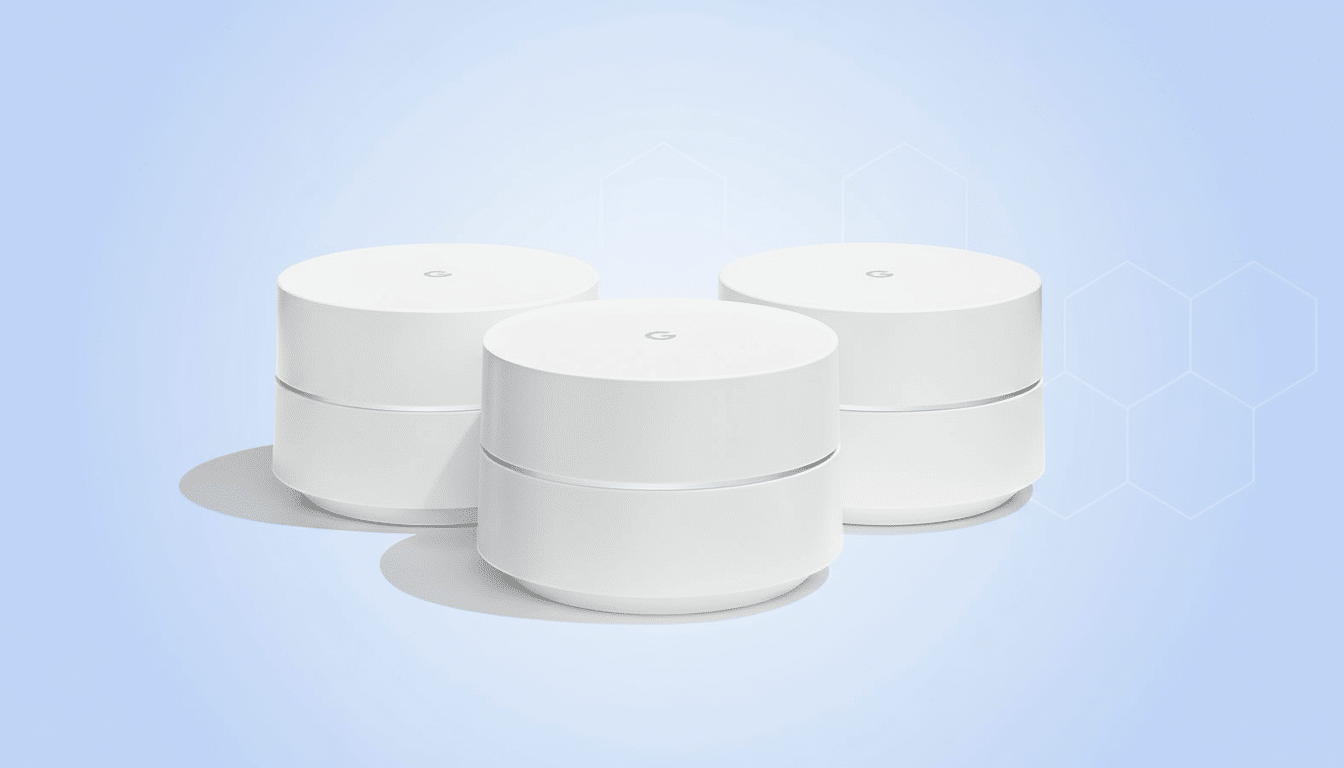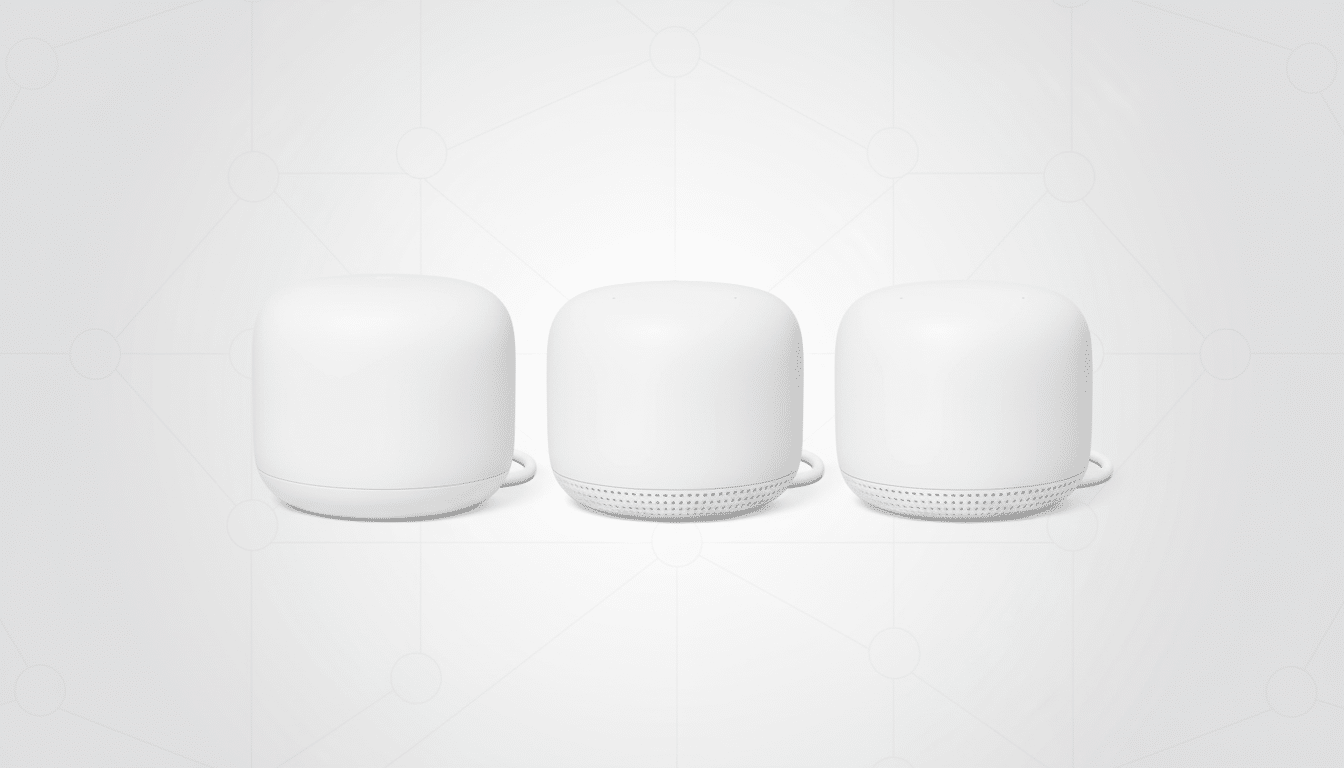Front and center is a blowout deal that slashes the Google Wifi three‑pack to $143.94 at Walmart, or 46% off its usual $270 list price. Even if you are a shopper trying to cure dead zones in your home without overspending on next‑gen hardware, this is the rare price that makes sense right now.
Each square node blankets approximately 1,500 square feet, so the trio is rated for up to 4,500 square feet of combined coverage. This one uses AC1200 dual‑band Wi‑Fi (Wi‑Fi 5) to keep your phones, laptops, TVs and smart home gear online as you walk through the house.
- Why This Discounted Price on Google Wifi Is Unusual
- What You Get With Google Wifi in This Three‑Pack
- Who Should Take This Deal on the Google Wifi Bundle
- Setup and Placement Tips for Stronger Mesh Coverage
- What to Know Before You Buy This Google Wifi Kit
- Bottom Line: This Three‑Pack Deal Is Worth Considering

Why This Discounted Price on Google Wifi Is Unusual
At $143.94, you’re effectively paying less than $48 per mesh point. Similar three‑packs from leading brands can usually be found for between $160 and $200 when they’re on sale, but they don’t always offer two Ethernet ports on every unit (and this is important if you need wired connections for a game console or office PC).
For context, the Federal Communications Commission recently increased its broadband benchmark to 100Mbps down and 20Mbps up (a tier many households already surpass). US median fixed broadband download speeds are well over 200Mbps, according to quarterly reports by Ookla’s Speedtest Intelligence. An AC1200 mesh similar to Google Wifi will comfortably run plans at those rates, so on paper at least the value proposition here is much more competitive than the specification sheet would suggest.
What You Get With Google Wifi in This Three‑Pack
Google’s mesh is designed to be stable and simple. The nodes make up a self‑healing network, so if one path becomes too congested or a unit temporarily falls offline, traffic is automatically reassigned. Seamless roaming ensures that your phones, tablets and laptops stick to the best possible signal without you realizing a handoff is happening.
Setup is via the Google Home app. You scan, plug in, name your network, and you are online within minutes. You can also run built‑in speed tests, set up a guest network, and pause access for particular devices; schedule downtimes for kids and prioritize bandwidth for a work laptop or streaming box. Automatic updates are installed without the need for a dashboard or restart‑pusher tool.
That’s two Gigabit Ethernet ports per puck, a feature not standard on all entry‑level mesh systems. If you can wire one node back to the main router via Ethernet, you’ll open up wireless bandwidth for connected clients and enjoy speedier performance in tough spots. In real‑world tests, Wi‑Fi 5 systems like this offer up to 300–450Mbps at short range on the 5GHz band, which is adequate for multiple simultaneous streams of 4K video, backups to the cloud, and concurrent video calls.

Who Should Take This Deal on the Google Wifi Bundle
If your internet plan is between 100 and 500Mbps and you experience dead zones in upstairs bedrooms or on the other side of the living room, this three‑pack will provide a smart, inexpensive remedy. Renters who live in multi‑unit buildings and owners of modest two‑story homes will get the most bang for their buck, especially if placement allows each node to “see” the next one with minimal walls in between.
Power users on gigabit‑plus plans, or with mighty Wi‑Fi 6 and grin‑inducing 6E devices, may want to take the next step to a newer standard. Systems like Wi‑Fi 6 mesh kits or Wi‑Fi 6E options can push more data at once and perform better on crowded networks. Still, devices like those come at a premium; the practical difference for many families in best‑case everyday speeds is smaller than the price differential implies.
Setup and Placement Tips for Stronger Mesh Coverage
Place one that’s close to your modem, another in the center of the home, and a third halfway to the farthest trouble spot. The Wi‑Fi Alliance advises line‑of‑sight wherever achievable and avoiding obstacles, such as brick or metal devices. For best results in the home, keep the nodes within a room or two (or at most one floor) of each other — it will mean faster backhaul and better performance for every device on your network.
If you’re replacing a lone router with this mesh, remember to switch off your old network after setting up the mesh so devices in its range don’t latch onto it when it offers a weaker signal from here on out. And if you can run a single Ethernet cable to one satellite node, do it — wired backhaul can dramatically improve performance at the edge of your coverage map.
What to Know Before You Buy This Google Wifi Kit
Google Wifi is part of Google’s broader mesh family and can be used in concert with Nest Wifi units if you expand later, though overall performance will “downshift” to match the speed of the slowest link. It incorporates WPA2 security, IPv6 support, and ongoing firmware updates. There’s no built‑in smart home hub or Wi‑Fi 6 feature set here, keeping the price low, but that’s something to keep in mind for future‑proofing.
Bottom Line: This Three‑Pack Deal Is Worth Considering
Google’s Wi‑Fi may be uncool, but a three‑pack for $143.94 is the rare intersection of coverage, simplicity, and price. If you’re looking for a reliable whole‑home internet connection and don’t quite want to spend Wi‑Fi 6 money, this record‑low offer is one of the most compelling mesh buys out there.

